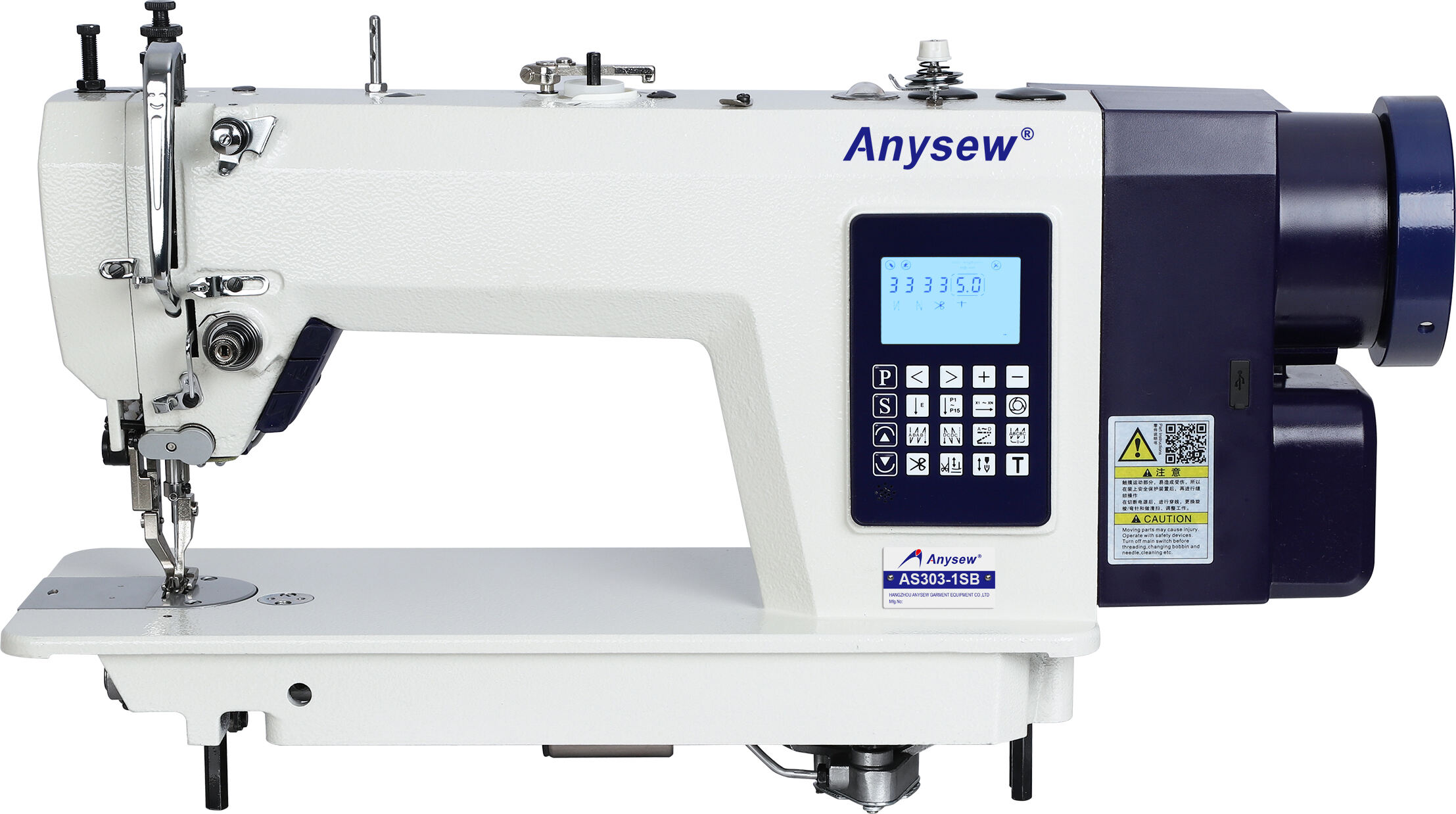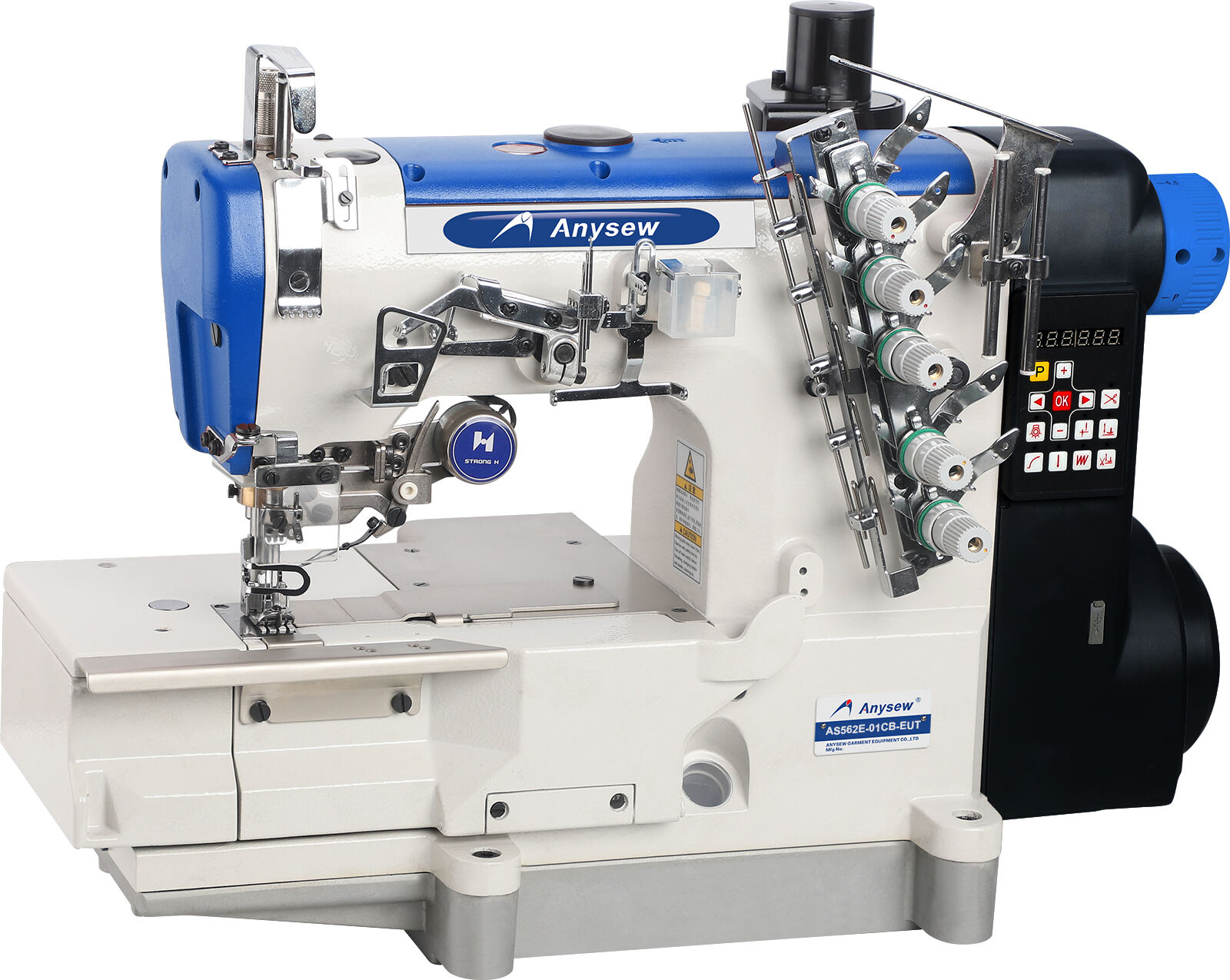Transforming Modern Manufacturing Through Advanced Sewing Technology
The evolution of manufacturing technology has revolutionized the textile and garment industry, with high-speed industrial sewing machines leading the charge. These powerful machines have become the backbone of modern garment production, offering unprecedented efficiency and precision that traditional sewing equipment simply cannot match. As the demand for quality textiles continues to grow, manufacturers are increasingly turning to these advanced systems to maintain competitiveness and meet market demands.
The impact of high-speed industrial sewing machines extends far beyond mere stitching capabilities. These sophisticated pieces of equipment represent a significant leap forward in manufacturing technology, enabling businesses to transform their production processes and achieve remarkable results in both quality and quantity. Understanding their benefits is crucial for any business looking to enhance its manufacturing capabilities.
Productivity and Efficiency Advantages
Accelerated Production Rates
High-speed industrial sewing machines operate at remarkable speeds, often reaching up to 7,000 stitches per minute. This incredible pace translates to significantly higher output compared to conventional machines. A single high-speed industrial sewing machine can complete tasks in a fraction of the time, allowing manufacturers to handle larger orders and meet tight deadlines with ease.
The enhanced speed doesn't just affect individual task completion - it transforms entire production lines. When multiple high-speed industrial sewing machines operate simultaneously, the cumulative effect on productivity is substantial. Factories can process more garments per hour, leading to increased daily output and improved overall efficiency.
Reduced Labor Costs
The implementation of high-speed industrial sewing machines leads to significant labor cost reductions. These machines can accomplish in minutes what might take hours with traditional equipment, allowing businesses to optimize their workforce allocation. While skilled operators are still essential, fewer machine operators are needed to achieve the same or higher production volumes.
Moreover, the automation features in modern high-speed industrial sewing machines reduce the physical strain on operators, leading to fewer work-related injuries and decreased downtime. This results in lower insurance costs and improved workplace satisfaction, creating a more sustainable business model.
Quality and Precision Improvements
Consistent Stitch Quality
One of the most remarkable features of high-speed industrial sewing machines is their ability to maintain exceptional stitch quality even at high speeds. Advanced tension control systems and precision engineering ensure that every stitch is uniform, creating professional-grade results that meet strict quality standards. This consistency is particularly crucial for high-end garment production where imperfections are unacceptable.
The machines' sophisticated mechanisms handle various fabric types with equal precision, from delicate silks to heavy denim. This versatility ensures that manufacturers can maintain high quality across diverse product lines without compromising on speed or efficiency.
Advanced Control Systems
Modern high-speed industrial sewing machines incorporate cutting-edge control systems that allow for precise adjustments and monitoring. Digital interfaces enable operators to fine-tune settings for different materials and stitch patterns, ensuring optimal results for each specific application. These control systems also help prevent common issues like thread breaks or tension problems before they occur.
The integration of computer-controlled operations means that complex stitching patterns can be executed with perfect accuracy every time. This level of control not only improves quality but also reduces waste and rework, contributing to overall operational efficiency.

Cost-Effectiveness and Return on Investment
Long-term Operating Savings
While the initial investment in high-speed industrial sewing machines may be substantial, the long-term cost benefits are significant. These machines are built with durability in mind, featuring robust components that withstand continuous operation. Their energy-efficient motors and optimized mechanical systems result in lower power consumption despite higher operating speeds.
Maintenance costs are also typically lower, as modern high-speed industrial sewing machines include self-diagnostic systems that identify potential issues early. This proactive approach to maintenance prevents costly breakdowns and extends the equipment's operational lifespan, maximizing the return on investment.
Material Optimization
The precision and consistency of high-speed industrial sewing machines contribute to significant material savings. Accurate stitching reduces fabric waste, while automated features like thread trimming and tension control minimize thread consumption. These savings may seem minor on a per-unit basis but accumulate to substantial amounts over time.
Additionally, the reduced error rate means fewer materials are wasted due to mistakes or quality issues. This optimization of material usage not only reduces costs but also supports sustainable manufacturing practices, an increasingly important consideration in today's market.
Frequently Asked Questions
How do high-speed industrial sewing machines differ from regular sewing machines?
High-speed industrial sewing machines are specifically designed for continuous commercial use, featuring more powerful motors, robust construction, and specialized components that enable them to operate at much higher speeds. They also include advanced features like automated threading, precision control systems, and industrial-grade durability that aren't found in regular sewing machines.
What maintenance is required for high-speed industrial sewing machines?
Regular maintenance includes daily cleaning, proper lubrication, tension adjustments, and periodic professional servicing. Modern machines often have built-in maintenance schedules and diagnostic systems to help operators maintain optimal performance. It's essential to follow manufacturer guidelines and schedule routine inspections to prevent issues and extend machine life.
Are high-speed industrial sewing machines suitable for all types of fabric?
While high-speed industrial sewing machines are versatile, different models are optimized for specific materials and applications. Most machines can handle a wide range of fabrics with proper setup and adjustments, but it's important to choose a machine that matches your primary production needs. Many manufacturers offer specialized models for particular materials like leather, denim, or delicate fabrics.

